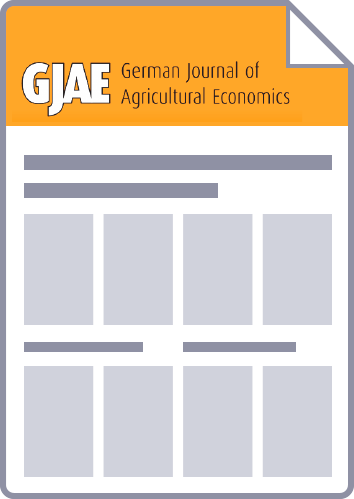Over the last several decades the agricultural sector has become more integrated into the national and world economies. This development has given rise to an increasing demand for economy wide and/or global quantitative analyses of policies affecting the agricultural and agribusiness sector. In this context, applied general equilibrium models have received considerable attention, because they are able to provide an elaborate representation of the economy including the linkages between farming, agribusiness, industrial and service sectors of the economy.On one side, this complete coverage permits unique insights into the effects of a changing economic and political environment. One the other side, it also requires a tremendous effort to put together a comprehensive data base for general equilibrium models including a detailed agricultural disaggregation. For this reason the paper compares partial and general equilibrium models that are currently applied in agricultural economics. This comparison indicates that partial equilibrium models indeed include more agricultural sector detail. However, there are also exceptions like the general equilibrium model GTAP (Global Trade Analysis Project), which shows a detailed coverage of the agricultural and agribusiness sector as well. To further explore appropriate areas of applications of both types of models, the paper also compares partial and general equilibrium models using empirical examples. This is done on the basis of the GTAP model which can easily be converted into a partial equilibrium model. The general and partial variant of the GTAP model are employed to analyze a global and a sector liberalization of policies. Here, a comparison of the results shows that the general equilibrium framework is best suited to analyze global liberalisation, while the partial equilibrium model fails to acknowledge the supply response constrains imposed by fixed factor endowment. On contrast to that, the results of the partial and general variant of the GTAP model are very similar, when a sector liberalization is conducted. Therefore, the more flexible partial equilibrium approach appears to be advantageous for the analysis of sector specific policies. However, as global and sector policies always go together, the use of general equilibrium models in conjunction with partial equilibrium models seems to be the best way to go.
MARTINA BROCKMEIER
Published: 01.11.1999 〉 Heft 11/1999 〉 Resort: Articles
Submitted: N. A. 〉 Feedback to authors after first review: N. A. 〉 Accepted: N. A.
DOI:
N. A.
ABSTRACT
CONTACT AUTHOR

DOWNLOAD THIS ARTICLE HERE
RELATED ARTICLES
An integrated model platform for the economic assessment of agricultural policies in the European Union
Published: 21.11.2008
Authors: Ignacio Pérez Domínguez, Stephan Hubertus Gay, Robert M’Barek
A number of economic models have been applied to analyse the Common Agricultural Policy. The partial equilibrium models CAPRI, ESIM, AGLINK, AGMEMOD and CAPSIM and the general equilibrium models GLOBE and GTAP are currently integrated in a modelling platform for Agro-Economic Policy Analysis in the premises of the Joint Research Centre in Seville in close…
Analyzing Results from Agricultural Large-scale Economic Simulation Models: Recent Progress and the Way Ahead
Published: 01.06.2015
Authors: Wolfgang Britz, Ignacio Pérez-Dominguez, Gopalakrishnan Badri Narayanan
This article discusses the role of post model pro-cessing and Graphical User Interfaces (GUIs) in the context of applying large and complex economic simulation models for Impact Assessment (IA) of policies impacting the agricultural and food sectors. The calculation of indicators from different domains and decomposition approaches is presented as part of post-processing of model…
Impacts of Stockholding Behaviour on Agricultural Market Volatility:
A Dynamic Computable General Equilibrium Approach
Published: 26.08.2010
Authors: Fabienne Femenia
Successive CAP reforms raise the question of whether it can have a price-stabilizing capability. In this context more and more attention is being paid to private risk-managing instruments such as storage. The effects of storage have already been widely studied in the economic literature. But hardly any of these studies take account of the links…


